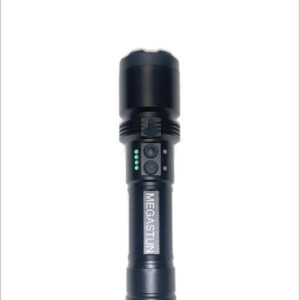The Science Behind Stun Guns: How Electrical Impulses Keep You Safe

Introduction:
Stun guns, often seen as a valuable tool in personal self-defense, have gained popularity for their effectiveness in incapacitating potential threats. But have you ever wondered about the science behind stun guns? In this article, we will explore the inner workings of stun guns, shedding light on the electrical impulses that make them such an effective self-defense option.
Understanding the Basics:
A stun gun, also known as a conducted electrical weapon (CEW), operates on a relatively simple scientific principle – the use of electrical impulses to disrupt the normal functioning of the human body. These devices are designed to temporarily incapacitate an assailant without causing any significant harm, making them a non-lethal self-defense option.
The Components of a Stun Gun:
- Power Source: Stun guns are powered by batteries, typically rechargeable ones. These batteries supply the electrical energy needed for the device to function.
- Electrodes: Stun guns have two electrodes, often located at the front of the device. When the device is activated, electrical energy flows from one electrode to the other.
- Control Circuitry: The control circuitry manages the flow of electrical energy from the power source to the electrodes. It controls the duration and intensity of the electrical pulses generated by the stun gun.
The Science Behind Stun Guns:
- Electrical Disruption: Stun guns operate by delivering a high-voltage, low-current electrical discharge to an assailant upon contact. This electrical discharge disrupts the normal functioning of the body’s neuromuscular system.
- Neuromuscular Disruption: When the electrical energy from the stun gun enters the assailant’s body, it interferes with the normal electrical signals sent by the nervous system to the muscles. This disruption results in a loss of control over muscle function.
- Pain and Incapacitation: The electrical impulses cause intense pain and muscle contractions, making it difficult for the assailant to move or maintain their balance. This pain and loss of muscle control are usually enough to incapacitate them temporarily.
- Temporary Effect: It’s important to note that the effects of a stun gun are temporary. Once the electrical discharge stops, the assailant typically begins to recover, and there is no long-term harm caused.
Safety Considerations:
While stun guns are designed to be non-lethal, they should be used with caution. It’s essential to follow safety guidelines and only use stun guns in self-defense situations. Misuse or overuse can potentially cause harm.
Conclusion:
Stun guns may seem like simple devices, but their effectiveness in incapacitating potential threats is rooted in the science of electrical disruption. By temporarily disrupting the neuromuscular system with high-voltage, low-current electrical impulses, stun guns provide individuals with a non-lethal means of self-defense. As with any self-defense tool, it’s crucial to use stun guns responsibly and within the bounds of the law to ensure personal safety and the safety of others.







